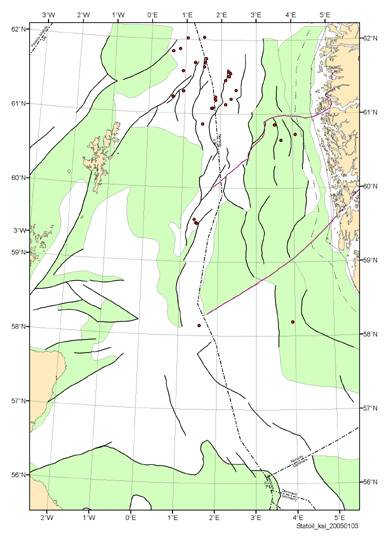Teist Formation
(See also NPD Bulletin no. 3 for previous
definition)
Hegre Group
Name
Named after the bird Black Guillemot (Norwegian: teist).
Well type section
Norwegian well 31/6-1
from 3455 m to 3739 m, coordinates N60°38'44.89", E03°40'52.28".
Well reference section
Norwegian well 33/5-1
from 3298 m to TD 3800 m, coordinates N 61°44'46.10", E 01°34'47.40".
Thickness
284 m in the type well and 502 m in the reference well.
Lithology
The Teist Formation consists of interbedded sandstone, claystone, mudstone
and marl. The sandstones are dominantly very fine to fine grained, dark
red brown and calcareous.The sandstones of core cut of this formation in
well GB 211/13-1 is well sorted, medium to coarse grained, sub angular to
sub rounded sand grains. The claystone and mudstone are red-brown while
the marl is red-brown to white.
Boundaries
The lower boundary represents a transition from the fine grained lithology
of the Smith Bank Formation to the sandstone prone lithology of the Teist
Formation. This transition is characterized by a sudden decrease in the
GR readings - from generally high readings of the Smith Bank Formation to
the irregular but generally average lower readings of the Teist Formation.
Distribution

Distribution of the Teist Formation (click image for full size).
Age
Scythian - Carnian (Lervik et al. 1989)
Depositional environment
No diagnostic flora has been observed so far within the succession of the
Teist Formation to indicate in which depositional environment the
sediments have been laid down. The sedimentary succession of core 5 in
well GB 211/13-1 is interpreted to reflect the migrating character of
ephemeral channels of a fluvial system.


